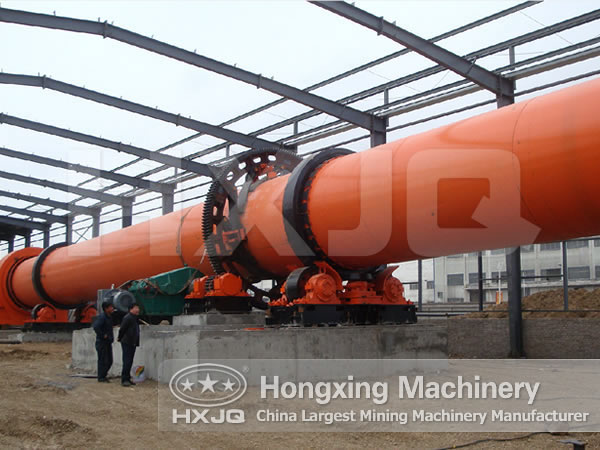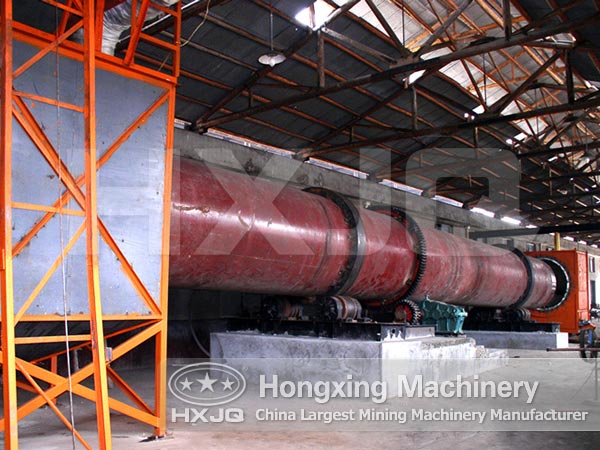The speed of heat transfer in cement Rotary kilnis slow. Materials by the flame (high temperature airflow) radiation and convection heat and brick radiation and conduction of heat transfer, its comprehensive heat transfer coefficient is lower, about 58~105w/(M2*℃), the Heat transfer area per kg of material only 0.012~0.013m2, airflow and material average temperature difference is generally only about 200 ℃, so , the material heats up slowly in the kiln. In particular, the rotational speed of the cement rotary kiln is usually only 1~3, and the material is moving slowly forward with the rotary kiln. Surface materials due to the thermal airflow and fire-resistant brick radiation, was soon heated, its temperature significantly higher than the internal material temperature, not very uniform. The temperature of the material surface of the sintering belt is at least 200 ℃ higher than the overall average temperature of the material. In this high temperature surface of the material, first of all to start a variety of reactions. Therefore, the heterogeneity of the material temperature will prolong the time required for the chemical reaction and increase the unnecessary energy loss.

The mechanical reliability plays a key role in the beneficiation plant. Henan hongxing Mining Machinery Co., Ltd. is a professional manufacturer and service provider of Rotary kiln, including rolling bearings, seals, lubrication systems and reliability solutions for the Rotary kiln. This greatly helps to increase productivity and reduce the costs associated with the operation of rotating machinery.
Examples of rotary machines are rotary kilns, dryers and granulator. Any downtime or misoperation can cause these large machines to work and have a huge impact on the operation of the entire plant. One of the most reliable ways to maintain the mechanical state of a rotary kiln is to measure, for example, the geometrical parameters of kiln shafts and supporting rollers. The next step is the key part of localization and optimizes it. The common application of rotary kiln Diagnostics may become an effective tool for failure prediction and improved maintenance planning. All measurements include operations in individual diagnostic modules. Therefore, any optimization recommendations reflect the actual work, including high temperature and a kiln shell thermal expansion error. Since the diagnostic measurement is in full operation of the machine, the maintenance of the Rotary kiln will not affect the production level of the plant.

Typical symptoms
Bearing overheating and mechanical wear
Lubrication Lining
Shell ovality
Benefits of regular maintenance of rotary kiln
- Extend the service life of the refractory lining and eliminate mechanical damage to the Rotary kiln
- Energy saving
- Extended kiln shell, bead ring, thrust roller, idler, shaft and bearing life
- Reduce wear of gear rings, pinions and actuators
- Avoid kiln shell cracks and kiln shell overheating